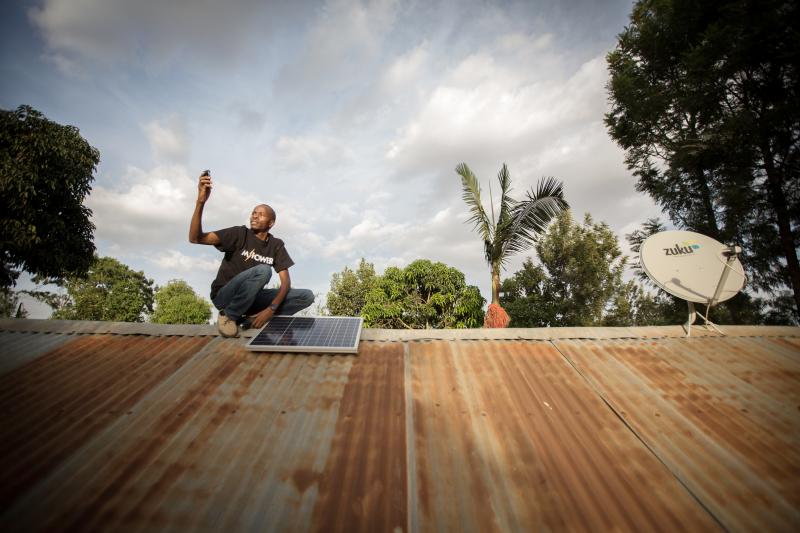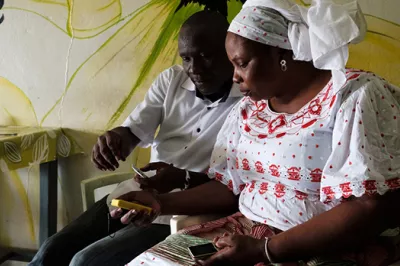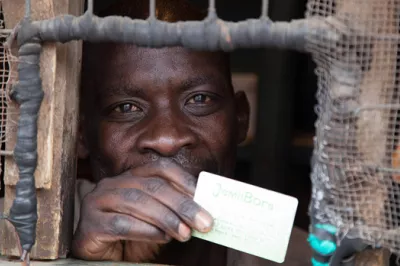Financial Innovation and Solar Power: Conquering Energy Poverty
Over one billion people globally live without access to electricity and another billion have unreliable connections. Can more people get electricity with the help of financial innovation? Early evidence suggests yes.
Mobisol and Off-Grid:Electric are two companies working in East Africa to expand energy access in poor communities. They have electrified more than 50,000 off-grid homes in Tanzania over the last two years with their solar solutions powered by digital finance, and are on pace to reach more than 200,000 homes by the end of 2015. Upwards of 80% of their customers would remain energy poor if it weren’t for such financing innovations powered by mobile money. Since 2014, CGAP has conducted research on three different product types with three leading PAYG energy providers in East Africa: a) Angaza Design’s PAYG tech platform enabling short-term payment plans for the cheapest and most portable entry-level solar lights; b) Mobisol’s three-year rent-to-own financing for larger solar home systems; and c) Off-Grid:Electric’s solar-as-a-service via a ten-year lease. While each product faces unique operational challenges, all three businesses rely on financing to deliver a PAYG solar experience to underserved consumers.
From our work with these companies, we are learning that the widespread availability of small-value payment systems like mobile money – through platforms such as M-PESA, Airtel Money and TigoPesa – combined with new pay-as-you-go (PAYG) technology can dramatically improve affordability of solar energy products. In fact, our experience shows that even if digital financing mechanisms are not ubiquitous and widespread, their mere availability radically increases overall adoption of solar products and helps businesses extending end-user financing to reduce costs. Moreover, these companies are extending the reach of formal finance by offering people a compelling reason to enter into a financial relationship.

The solar market is ripe for analysis and experimentation because the core technology is relatively stable in terms of cost and reliability, and innovation in financing is driving scaled uptake across multiple markets. In developed markets, innovative solar leasing models have unlocked consumer demand and significant investment in the sector. We’re seeing a similar pattern emerging in developing markets, where decentralized solar solutions are proving to be a much more affordable and effective method of providing electricity access to almost one-third of world’s population underserved by traditional grids. High quality solar solutions exist, but typically require a significant upfront investment. Until very recently, extending credit to such consumers to purchase a solar solution was simply too expensive given the risk level (and lack of credit history) and high transaction costs (via manual cash collection and management). Dozens of PAYG solar companies are now able to extend end-user financing to consumers in Africa and Asia who are predominantly rural, underserved by the national electricity grid, and often unserved by formal finance.
Financial innovation is expanding access to electricity in two ways.
1. Financial innovation makes electricity up to 65% more affordable than before.
By dramatically reducing these transaction costs and the risk of cash management fraud, mobile payment options in Kenya and Tanzania allow Angaza, Mobisol, and Off-Grid:Electric to deliver solar energy services to the customer’s doorstep at a price that can be significantly more affordable than what that same household or business was spending on kerosene and other alternatives. The average off-grid household in Tanzania spends about $15 per month on home lighting (two kerosene lamps), mobile phone charging, and disposable batteries for radio and torches. While some solar solutions are available in larger Tanzanian towns, the high upfront cost ($100+) makes them unaffordable to most of the off-grid market with limited savings and access to finance.
By spreading that investment over three years or more, Mobisol and Off-Grid:Electric are able to deliver modern electricity to highly unbanked Tanzanian consumers at a price point that’s less than these existing expenditures. For example, Off-Grid:Electric’s entry-level energy-as-a-service offering can provide that same household with electricity via a solar home solution at one quarter of what they were spending on kerosene and other traditional energy sources. Over ten years, the household can save almost $2,000 in avoided energy expenditures by switching to a PAYG solar system. Mobisol’s three-year payment plans for larger solar home solutions also save customers money immediately, but the bigger reason to invest is the long-term savings. After paying off the asset in three years, the product will deliver free energy for at least the next seven years. Angaza’s flexible PAYG technology platform enables partner solar product companies and distributors to customize pricing along multiple variables for customer segments to reach a price at or below the price of current energy expenditures. Our research with these companies indicates that reaching an ongoing energy top-up price point – i.e. daily, weekly, monthly increments – that is lower than previous expenditures is critical to sales uptake and timely repayment.
Mobile payments give off-grid consumers more control over how and when they pay for energy services, introduce a level of transparency unavailable with brick-and-mortar financing – through an instant verification that their solar device was credited for the exact amount sent – and flexible financing that can allow for payments and consumption to better match how and when a household earns money throughout the year.
2. Financial innovations are enabling these providers to reach significantly more customers, faster than ever before.
By packaging the solar asset and financing for end-users at the point of sale, PAYG solar providers are no longer constrained to serving the geographies and customer segments favored by existing financial providers – a major barrier until recently. Mobisol and Off-Grid:Electric can target high-density off-grid areas without a single bank or MFI branch, leveraging technology to deliver a form of end-user finance that’s lighter touch, fully digital, and potentially lower risk than existing consumer finance models.
Sales agents for both Mobisol and Off-Grid:Electric use proprietary mobile apps to collect new customer data – such as demographics, photos of the customer and their home, GPS locations of homes and businesses – and either make a credit decision on the spot, or upload the information to headquarters for instant credit assessment and approval. Mobile payments and PAYG tech dramatically reduce the need for in-depth, in-person risk assessment, allowing these companies to approve significantly more customers than a bank or MFI would consider. For example, Off-Grid:Electric’s perpetual leasing model allows the company to approve almost any customer who is off-grid, uses a mobile phone, and can pay the upfront connection fee. If any customer goes for more than 30 days without topping up, Off-Grid:Electric can take back the system, refurbish, and redeploy it to a new paying customer in less than seven days. This is perhaps one of the biggest advantages of PAYG solar as a financial product: companies are financing a physical asset that can be remotely switched off, repossessed, and redeployed or re-sold. Mobisol operates with similar attributes and retains similar advantages, but with longer repayment terms and larger amounts of financing.
This ability to deliver point-of-sale financing, virtually anywhere, is having profound impact on the uptake of solar. In Kenya, research with Angaza Design indicates that short-term payment plans enabled by digital finance can increase uptake of portable solar lights by 2-5 times over baseline sales when the customer is required to pay the full amount in cash up front. Customers who successfully pay off such portable solar lights can leverage this first repayment experience with Angaza’s PAYG platform to be automatically qualified for the purchase of higher functioning solar products serviced by the company’s same technology platform.
The impact of financing innovation on the solar home system category can be even bigger as the higher ticket price of such products ($100+) is unaffordable to a majority of the market on a cash up front basis.
The benefits of PAYG solar are not just limited to conquering the energy poverty trap, however. These solar operators are signing customers up for mobile wallets and giving them an incentive to continue using mobile money. In this way, they are becoming drivers of financial inclusion. More on that in our next post.




Comments
this is important information
this is important information for all who are in the market.
Add new comment